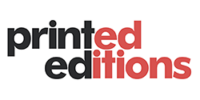The Woodcuts of Wassily Kandinsky
Forging the Path to Abstraction Wassily Kandinsky’s woodcuts represent far more than a subsidiary aspect of his artistic production. These remarkable works served as an experimental laboratory where the Russian-born artist worked through fundamental questions about form, space, and perception that would ultimately revolutionise modern art. Whilst Kandinsky is justly celebrated for his groundbreaking abstract … Continued
